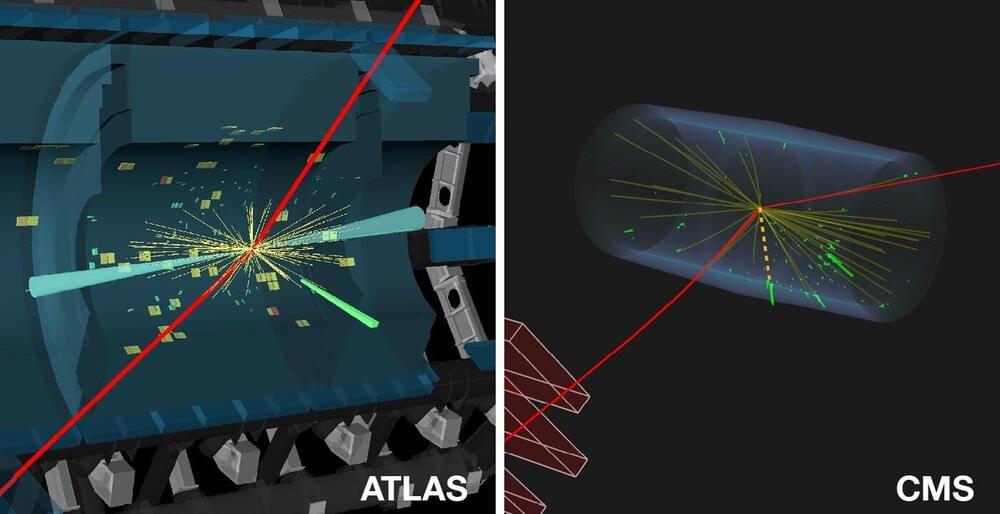The discovery of the Higgs boson at CERN’s Large Hadron Collider (LHC) in 2012 marked a significant milestone in particle physics. Since then, the ATLAS and CMS collaborations have been diligently investigating the properties of this unique particle and searching to establish the different ways in which it is produced and decays into other particles.
At the Large Hadron Collider Physics (LHCP) conference this week, ATLAS and CMS report how they teamed up to find the first evidence of the rare process in which the Higgs boson decays into a Z boson, the electrically neutral carrier of the weak force, and a photon, the carrier of the electromagnetic force. This Higgs boson decay could provide indirect evidence of the existence of particles beyond those predicted by the Standard Model of particle physics.
The decay of the Higgs boson into a Z boson and a photon is similar to that of a decay into two photons. In these processes, the Higgs boson does not decay directly into these pairs of particles. Instead, the decays proceed via an intermediate “loop” of “virtual” particles that pop in and out of existence and cannot be directly detected. These virtual particles could include new, as yet undiscovered particles that interact with the Higgs boson.










Comments are closed.